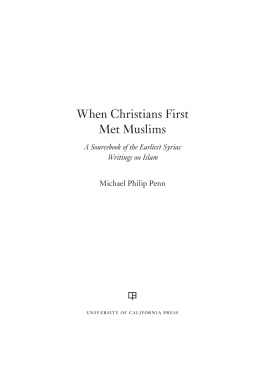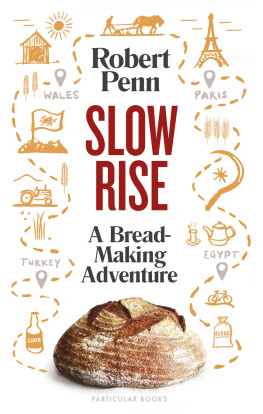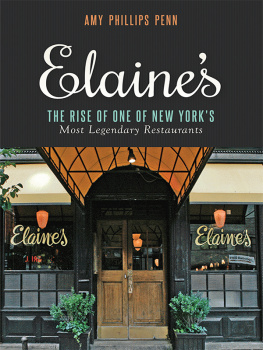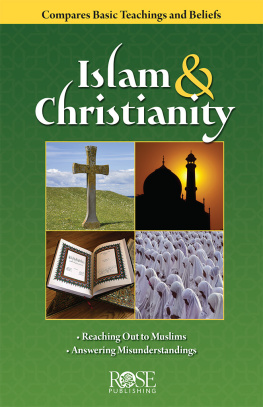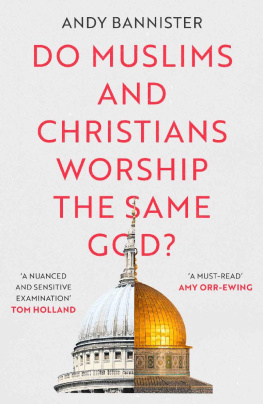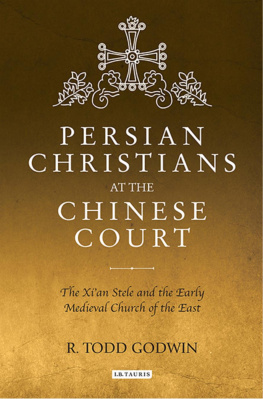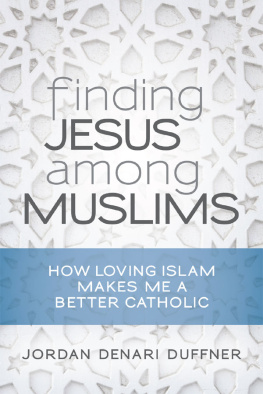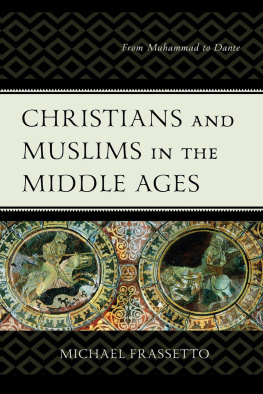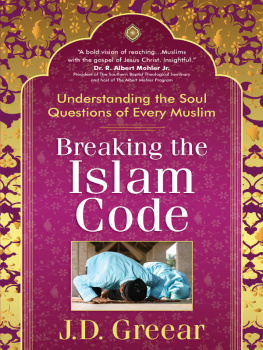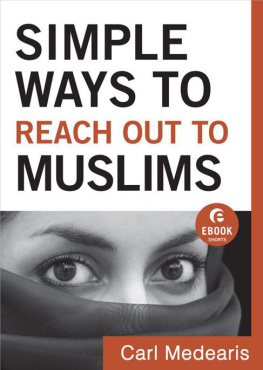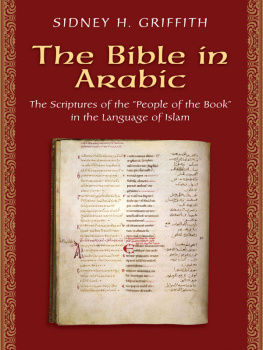When Christians First Met Muslims
A Sourcebook of the Earliest Syriac Writings on Islam
Michael Philip Penn

UNIVERSITY OF CALIFORNIA PRESS
University of California Press, one of the most distinguished university presses in the United States, enriches lives around the world by advancing scholarship in the humanities, social sciences, and natural sciences. Its activities are supported by the UC Press Foundation and by philanthropic contributions from individuals and institutions. For more information, visit www.ucpress.edu.
University of California Press
Oakland, California
2015 by The Regents of the University of California
Library of Congress Cataloging-in-Publication Data
Penn, Michael Philip, author.
When Christians first met Muslims : a sourcebook of the earliest Syriac writings on Islam / Michael Philip Penn.
p. cm.
Includes bibliographical references and index.
ISBN 978-0-520-28493-7 (cloth, alk. paper)
ISBN 978-0-520-28494-4 (pbk., alk. paper)
ISBN 978-0-520-96057-2 (electronic)
1. IslamEarly works to 1800. 2. Christianity and other religionsIslamHistoryTo 1500Sources. 3. IslamRelationsChristianityHistoryTo 1500Sources. 4. Syriac ChristiansHistoryTo 1500Sources. I. Title.
BP160.P46 2015
261.2709021dc232014034643
Manufactured in the United States of America
24 23 22 21 20 19 18 17 16 15
10 9 8 7 6 5 4 3 2 1
In keeping with a commitment to support environmentally responsible and sustainable printing practices, UC Press has printed this book on Natures Natural, a fiber that contains 30% post-consumer waste and meets the minimum requirements of ANSI/NISO Z 39.48-1992 ( R 1997) ( Permanence of Paper ).
For Sarah, Sasha, and Tabitha
CONTENTS
ACKNOWLEDGMENTS
This book was made possible by four institutions. It never would have come into being were it not for the incredible generosity of an American Council for Learned Societies Frederick Burkhardt Residential Fellowship, which funded a year of research leave. That year was spent at the National Humanities Center, whose hospitality and truly amazing staff have given it the well deserved reputation of being academic heaven. The first pages of the project, however, began under the auspices of New York Universitys Institute for the Study of the Ancient World, which also generously supported my work. And through it all, Mount Holyoke College not only allowed me to take advantage of these opportunities but also provided additional support, especially in the form of travel and research assistant grants, that allowed this all to come together.
I also have been sustained by an incredible network of friends, colleagues, and mentors. Gabriel Aydin, Uriel Simonsohn, and Lucas Van Rompay kindly looked through various parts of my translations. Rhonda Burnette-Bletsch, Suleiman Mourad, and Michael Pregill provided valuable revisions for the introduction. The entire book was made better through the suggestions of two anonymous readers for University of California Press. The writing itself was vastly improved through the editorial assistance of Juliana Froggatt; Laura Poole, the founder of Archer Editorial Services; and Cindy Fulton at UC Press. I am still overwhelmed by the enthusiasm my editor Eric Schmidt has had for this project and for his expertise and kindness throughout the publication process. But most important has been the emotional support I have constantly received from my family, from a wonderful group of best friends, and from my Doktormutter, Liz Clark.
PROLOGUE
THE YEAR 630
The year is 630 according to the Christian calendar, and the Byzantine emperor Heraclius is celebrating at the center of the world. Through a daring sneak attack that still impresses military historians, he has just defeated the Sasanian King of Kings, concluding a twenty-five-year war between the Byzantine and Persian Empires. To crown his victory, Heraclius triumphantly processes into Jerusalem, to the Church of the Resurrection, the navel of the world, where Adam was thought to be buried and Christ resurrected. Sixteen years earlier the Persians had wrested Jerusalem from Byzantine control, gained possession of this church, and captured Jesuss true cross. In 630 Heraclius is reversing all of this. As part of their peace settlement with the Byzantines, the Persians have returned Jesuss cross to Heraclius, and this relic now leads his exultant procession into the recently reclaimed holy city and holy sepulcher. It is hard to think of a more appropriate or a more carefully staged ending to a war that many have labeled the first true crusade.
In 630 Heraclius has a lot to celebrate. Twenty years earlier, this son of a Byzantine general rebelled against Emperor Phocas (d. 610), who in turn had come to power through the murder of his predecessor, Emperor Maurice (d. 602). As the last one standing after a series of coups, Heraclius took charge of an empire fraught with military and theological challenges. His most immediate concern was the ongoing campaigns against the Persians. In 602 the Sasanian king had used Phocass murder of Maurice as a pretext to invade Byzantine territory. Heracliuss murder of Phocas did not end Persian advances, which simply intensified. In 614 the Persians gained control of Jerusalem and the true cross. It took Heraclius ten years to begin turning the tide. In 624 he headed a military campaign into Armenia that eventually brought him through Mesopotamia and, in 628, to the outskirts of the Persian capital of Ctestiphon, twenty miles from modern-day Baghdad. His military successes prompted a Persian coup and subsequent capitulation.
Now, in 630, the return of the cross seals a quarter century of warfare. But though Heracliuss entry through Jerusalems Golden Gate symbolizes a militarily united Byzantium, it does not lessen the vast theological rifts that continue to divide his empire. His rule inherited centuries of intra-Christian strife. By all accounts, he soon made the situation even worse. At stake were the increasingly heated debates regarding Christology: how best to describe the relationship between Christs divinity and Christs humanity.
Two hundred years earlier, these controversies had surfaced when Constantinoples Bishop Nestorius declared that Jesuss mother should not be called the bearer of God. Nestorius and his supporters argued that Mary could not have given birth to Christs divine nature, only to his human nature. From their perspective, only by keeping Christs human nature and his divine nature conceptually separate could one avoid the blasphemous belief that during the Crucifixion God himself had suffered and died. In 431 Nestorius was outmaneuvered by his nemesis Cyril of Alexander, and the Council of Ephesus ruled that Nestorius and the views attributed to him were heretical. For Nestorius, this meant exile. For Christianity, this meant a division that continues to this day.
By the fifth century there were already many Christians for whom some version of the two-nature Christology espoused by Nestorius and his teacher Theodore of Mopsuestia was a central theological dogma. This was particularly the case for the Church of the East, primarily located in Persian territory. By anathemizing these beliefs, the Council of Ephesus further separated the Church of the East from the rest of Christianity. This church continues today. Present-day adherents are often called Assyrian Christians or, more disparagingly, Nestorians. Twenty-first-century scholars more often refer to members of the Church of the East as East Syrians.

